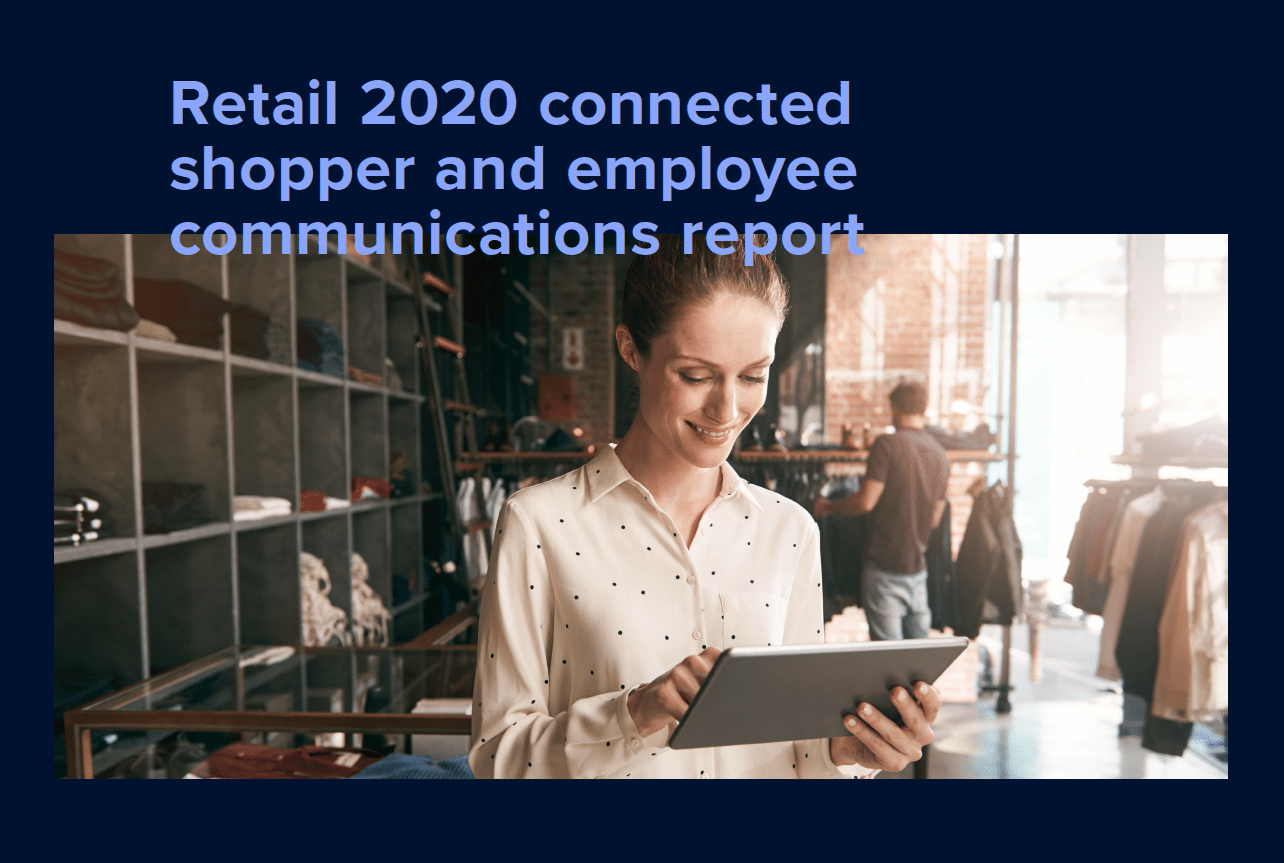Many industries are in the midst of a massive transformation, driven by the shift to cloud, the evolution of the workplace, and a pandemic that changed the way we connect on a global scale. The RingCentral Connected Shopper and Employee Communication report delivers some fascinating updates into how the landscape is changing.
The research examines survey results across four generations of consumers: Gen Z, Millennials, Gen Xers, and Baby Boomers. Results from over 2,500 shoppers and 1,000 retail employees indicated some interesting findings on the preferences people have for communicating with retailers during the consumer journey.
The report offers insights into the perceptions that shoppers have regarding the ability of retailers to meet expectations and retail employee perceptions on consumer challenges. We also covered the preferences that retail employees have for collaboration and communication.
Retail communications are evolving
Consumers in 2020 are still experiencing frustrations. We’re facing a range of difficulties in interactions with retailers, and employees in retail companies are sensing the discomfort. Around 89% of retail employees say their customers face problems when trying to communicate with the organisation.
Clients are dealing with long wait times (58%), frustrating conversations (41%) and feelings of anger (21%), all of which detract from the customer experience. Another major problem is the significant gap between how employees perceive customer angst, and the depth of the frustration that clients feel. Around 45% of employees believe that customers are facing longer wait times, though 58% of clients report having to consistently wait, as evidenced in our eBook Long hold times are killing your CX.
The significant gaps between employee understanding of consumer problems, and the issues that customer’s face indicates a need for better-connected contact centres. Retailers need to connect proactively with customers to keep them feeling understood, appreciated, and satisfied with their service.
Omnichannel communication is essential
Aside from issues with companies underplaying customer concerns, the retail environment is also seeing a rise in demand for omnichannel communications. 89% of consumers say their purchasing decisions hang on whether retailers can offer their preferred methods of communication. Around 72% say they would switch retailers if they didn’t have access to their preferred channel.
We found that 96% of customers want to ensure their issue is solved quickly on the channel that’s suitable for them. Around half of the employees we surveyed also said it takes longer to resolve customer issues when teams can’t use the tools consumers want.
Omnichannel operations are an essential part of preserving your customer base; as Forbes notes, it costs much less to retain an existing customer than to find a new one.
The research proves that consumers still prefer direct methods of communication. 95% of frontline workers and 66% of shoppers prefer in-person communication to other methods. The significant gap between the two solutions highlights the extent to which clients engage with their retailers in the digital world. Online engagement will continue to accelerate as younger generations increase their presence in the marketplace.

Understanding generational preferences
Retailers looking to serve their customers better should be taking note of the preferred communication methods for each customer. Every generation has its own preferred solution for communication, with older groups often preferring methods they already feel familiar with.
For instance, Baby Boomers say they prefer to connect with companies either in-person or over the phone. On the other hand, millennials are fans of online chat, texting, and instant messaging as a quick way to resolve problems. In the same vein, Gen Z hates the idea of connecting with people over the phone, while millennials avoid in-person interactions. Baby Boomers are more likely to avoid opportunities to communicate through text.
Since retail transactions are a historically face-to-face experience, it’s unsurprising that frontline workers and shoppers still overwhelmingly prefer these in-person interactions. However, demand for digital is growing. Half of the top four methods shoppers chose for their “preferred mediums” in our retail research report are digital.
Retailers that can’t keep up with increasing changes in demand are going to face some serious problems. 46% of customers say they would simply abandon a purchase if they couldn’t use their preferred channel. Another 35% say they would take their business to another store. Consumers are more willing to walk away from brands that don’t serve them on their chosen platforms.
The issue of overcommunication
An interesting finding in our retail research report is that work communication reflects shopper behaviour. Communication between retail employees is almost as important as the conversations between consumers and brands. Whether in support environments or on the frontline, conversations are happening everywhere. Currently, retail employees use a wide selection of communication methods to communicate with colleagues.
Around four in five retail employees say they prefer in-person communication. Many employees still use email (51%), text (56% ), and phone (63%) to interact. However, 82% of retail employees say they face some kind of issue when collaborating with colleagues. Crucially, 41% of employees complain about interruptions, while 37% reference missing messages. 34% of respondents say they can’t reach a colleague when trying to communicate.
Interestingly, as the number of available applications for communications increases, driven by the rise of different communication methods, discussions are becoming harder to manage. Even among the digitally savvy, employees are struggling. 28% of millennials say app overload is a serious issue in communication. 68% of retail employees believe that using a single app would make it easier to connect with customers. Additionally, 67% of employees believe a single app would improve employee communications.
Unified communications is more crucial now than ever.
Empower your retail employees
As communication issues continue to arise, business leaders need to find the right way to empower teams with valuable communication methods. Having the right communications strategy will help to strengthen connections between employees while simultaneously strengthening customer relationships.
For additional insights and help preparing your team for the new landscape, download the RingCentral eBook What your employees need to keep your customers happy. Here, we discuss why contact centres are crucial to the Unified Communications (UC) experience, and how you can benefit from a combined UC and contact centre solution. We also offer tips on how to reduce app overload, boost collaborative culture, and simplify conversations.
Originally published Oct 21, 2020, updated Jan 17, 2023
